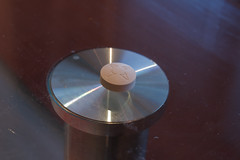 |
| diclofenac sodium - misoprostol (Photo credit: farlukar) |
Facts:
Cytotec works as a prostiglandin to induce labor contractions and is relatively fast, effective, and inexpensive.
Cytotec is not FDA approved for any purpose other than treatment of ulcers, and is specifically contradicted by the manufacturer for use in pregnant women.
Reality Check:
Popular (My colleagues and I use this drug all the time.) and safe (This drug has scientific studies proving that it does more good than harm.) are two very different things. Cytotec frequently causes uterine hyperstimulation. It can lead to uterine rupture or a rare amniotic fluid embolism or even neonatal brain damage. After lawsuits involving tragedies related to cytotec use, it is generally no longer used in VBAC situations because of the high risk of uterine rupture.
What is the risk of uterine rupture when using cytotec in someone (like me) who has not ever had a c-section? I was shocked to find out that nobody really knows for sure if the risk is that much lower. Just because your care provider has not witnessed a serious complication doesn't mean it couldn't happen to you. The scary reality is that once cytotec is given it can't be stopped. You can be given another medicine to slow down contractions, but this is rarely done.
I was lucky. My baby was born quickly before the cytotec induced nightmarish pain caused a complete uterine rupture, but I did have the warning signs of a small uterine tear starting. It is so absolutely unnecessary to take that chance. If you absolutely cannot avoid induction, consider alternatives such as the foley balloon catheter or even cervadil.
American Journal of Obstetrics & Gynacology: A randomized trial of preinduction cervical ripening: dinoprostone vaginal insert versus double-balloon catheter
If all else fails, pitocin is still safer so long as you make sure it is turned off at the first sign of uterine hyperstimulation (once again this is defined as more than 5 contractions in 10 minutes or less than 1 minute between contractions).
Need more evidence?
Consortium for the Evidence-based practice of Obstetrics: Information on the off Label use of ulcer drug Cytotec / misoprostal to induce labor
Need even more evidence? Read Born in the USA
